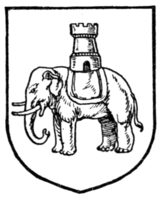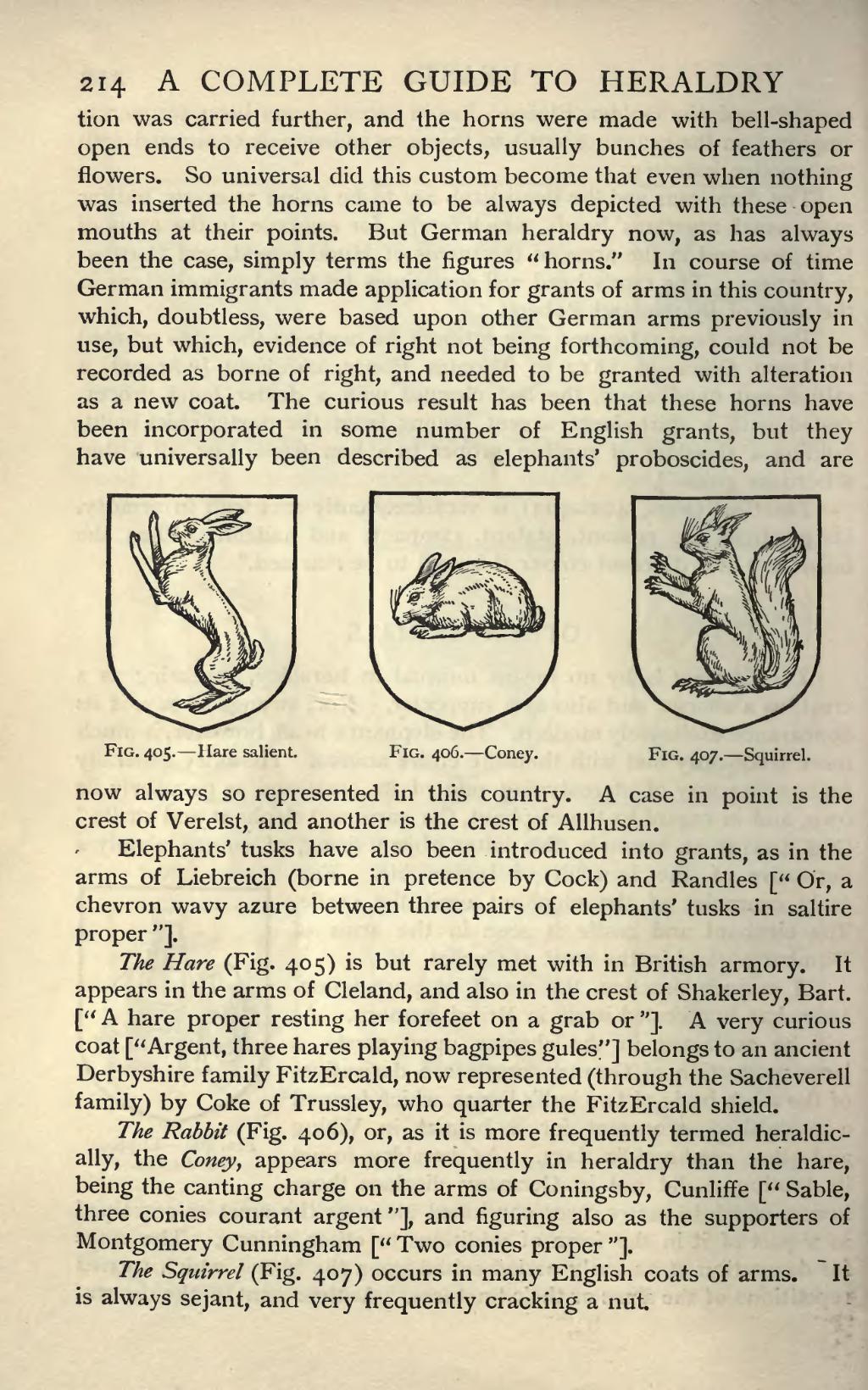tion was carried further, and the horns were made with bell-shaped open ends to receive other objects, usually bunches of feathers or flowers. So universal did this custom become that even when nothing was inserted the horns came to be always depicted with these open mouths at their points. But German heraldry now, as has always been the case, simply terms the figures "horns." In course of time German immigrants made application for grants of arms in this country, which, doubtless, were based upon other German arms previously in use, but which, evidence of right not being forthcoming, could not be recorded as borne of right, and needed to be granted with alteration as a new coat. The curious result has been that these horns have been incorporated in some number of English grants, but they have universally been described as elephants' proboscides, and are now always so represented in this country. A case in point is the crest of Verelst, and another is the crest of Allhusen.
 Fig. 404.—Elephant and castle. |
 Fig. 405.—Hare salient. |
 Fig. 406.—Coney. |
 Fig. 407.—Squirrel. |
Elephants' tusks have also been introduced into grants, as in the arms of Liebreich (borne in pretence by Cock) and Randles ["Or, a chevron wavy azure between three pairs of elephants' tusks in saltire proper"].
The Hare (Fig. 405) is but rarely met with in British armory. It appears in the arms of Cleland, and also in the crest of Shakerley, Bart. ["A hare proper resting her forefeet on a grab or"]. A very curious coat ["Argent, three hares playing bagpipes gules"] belongs to an ancient Derbyshire family FitzErcald, now represented (through the Sacheverell family) by Coke of Trussley, who quarter the FitzErcald shield.
The Rabbit (Fig. 406), or, as it is more frequently termed heraldically, the Coney, appears more frequently in heraldry than the hare, being the canting charge on the arms of Coningsby, Cunliffe ["Sable, three conies courant argent"], and figuring also as the supporters of Montgomery Cunningham ["Two conies proper"].
The Squirrel (Fig. 407) occurs in many English coats of arms. It is always sejant, and very frequently cracking a nut.
